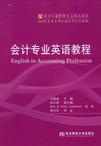会计专业英语教程
出版时间:2008-10 出版社:东北财经大学出版社 作者:马建威 主编 页数:329
Tag标签:无
前言
随着《企业会计准则》和《中国注册会计师执业准则》在中国的广泛实施,中国会计不仅在制度和理论上,更是在实务中,与国际会计实现了实质性趋同:随着中国会计的进一步国际化,会计人员也必将与国际会计实现无缝对接。这一切都对广大会计人提出了更高的要求,尤其是专业英语方面。一本好的专业英语教材无疑会帮助会计专业学生和其他会计从业人员更好地掌握“专业+英语”的相关知识。本教材试图在这方面,尝试性地起到有益的作用。 与其他教材相比,本教材具有如下特点和创新: ①成果丰硕,中国特色明显。《会计专业英语教程》是马建威博士主持的2008年度教育部双语教学示范课程“中级财务会计”(Intermediate Financial Accounting)的配套教材及阶段性成果之一。本教材中相当一部分内容由作者编写,直接阐述了中国会计的最新发展,并与FASB、IASB进行了呼应;书中很多案例或例题直接采用了部分中国企业的相关内容,比如第6章中的报表就引用了康佳集团的2007年年报,充分体现了会计专业英语的“本土化”。
内容概要
本教材分四篇、共十四章,较为深入系统地阐述了财务会计、成本管理会计、财务管理和审计学等专业知识,并且将理论与实务紧密结合。旨在考虑到教学计划中设置的“专业英语”课程远远无法满足学生对专业英语的需要。书中章节设计严谨、合理。每章以Feature Topic作为切入话题,继而列出本章的Chapter Skeleton,介绍本章的主要内容和学习目标;在正文之后,Chapter Summary对本章内容作一个小结,然后列出Key Terms并作了诠释;在课后练习与巩固环节,我们设计了Self-Test(ST)、Questions for Discussion(QFD)、Exercises(Ex)等练习类型,帮助读者更好地掌握和应用所举知识;最后,光盘中所附每章Broadening Your Perceptive环节提供了一到两篇补充阅读材料,以期对拓展读者的视野有所帮助。本教材每章之后都提供本章重要专业术语的详细注解。该教材不仅适合高等院校本科生和研究生会计、财务管理和审计专业用作专业英语教学和双语教学的理想教材,而且其他会计从业人员、教学人员、管理人员、审计和税务官员等也可用作阅读材料。
书籍目录
Part Ⅰ Financial Accounting Chapter 1 Financial Accounting Conceptual Framework 1.1 The Purpose of Accounting and Financial Reporting 1.2 Accounting Basis and Accounting Assumptions 1.3 Financial Accounting Principles and Measurement Bases 1.4 Qualitative Characteristics of Accounting Information Chapter 2 Accounting for Assets (Ⅰ) 2.1 Cash and Internal Control over Cash Transactions 2.2 Accounts Receivable and Notes Receivable 2.3 Inventories Chapter 3 Accounting for Assets (Ⅱ) 3.1 Plant and Equipment 3.2 Accounting for Intangibles 3.3 Investments Chapter 4 Liabilities 4.1 Current Liabilities 4.2 Long-Term Liabilities Chapter 5 Owners' Equity 5.1 Income, Expenses and Profits 5.2 Owners' Equity Chapter 6 Financial Reports 6.1 Financial Statements 6.2 Notes and Other InformationPart Ⅱ Cost and Management Accounting Chapter 7 Calculation and Management of the Cost 7.1 Full Costing 7.2 Deriving Full Costs 7.3 Activity-Based Costing 7.4 Cost and Pricing Chapter 8 The Behavior of Costs and Decision 8.1 The Relevant Costs 8.2 The Behavior of Costs 8.3 Cost-Volume-Profit Analysis 8.4 Marginal Analysis and Decision Chapter 9 Budgeting and Budgetary Control 9.1 Budgets and Plans 9.2 The Budget-Setting Process 9.3 Variance and Budgetary ControlPart Ⅲ Corporate Finance Chapter 10 Financial Operations 10.1 Financial Instruments and Markets 10.2 The Financing Decision 10.3 The Investment Decision Chapter 11 Evaluating Financial Performance 11.1 The Cash Flow Cycle 11.2 Financial Statements and the Value Problem 11.3 The Levers of Financial Performance 11.4 Ratio AnalysisPart Ⅳ Auditing Chapter 12 Auditing Principles 12.1 Auditing Basis and Auditing Objectives 12.2 Materiality and Auditing Risk 12.3 Auditing Evidence and Auditing Sampling Chapter 13 Audit Working Papers and Auditing Reports 13.1 Auditing Working Papers 13.2 Auditing Reports Chapter 14 Other Assurance Engagements and Quality Control 14.1 Other Assurance Engagements 14.2 Quality ControlMain References
章节摘录
Three variables characterize a bond: its parvalue, its coupon rate, and its maturitydate. The par value is the amount of money the holder will receive on the bonds maturitydate. The coupon rate is the percentage of par value the issuer promises to pay theinvestor annually as interest income. On the maturity date, the company will pay the bondholder principal and will cease further interest payments. On the issue date, companies usually try to set the coupon rate on the new bondequal to the prevailing interest rate on other bonds of similar maturity and quality. Thisensures that the bonds initial market price will about equal its par value. After issue, themarket price of a bond can differ substantially from its par value, as market interest rateschange. When interest rates rise, bond prices fall, and vice versa. Most forms of long-term indebtedness require periodic repayment of principal. Thisprincipal repayment is known as a sinking fund. Readers who have studied too muchaccounting will know that technically a sinking fund is a sum of money the company setsaside to meet a future obligation, and this is the way bonds used to work, but no more.Today a bond sinking fund is a direct payment to creditors that reduces principal.Depending on the indenture agreement, there are several ways a firm can meet itssinking-fund obligation. It can repurchase a certain number of bonds in securities markets,or it can retire a certain number of bonds by paying the holders par value. When acompany has a choice, it will naturally repurchase bonds if the market price of the bondsis below par value, which occurs whenever interest rates rise after the bond is issued.
图书封面
图书标签Tags
无
评论、评分、阅读与下载
用户评论 (总计9条)
- 对于初级会计来说,够用了,够专业
- 里边儿是全英的,内容也比较细致。对于一个英语专业的人来说,还是不错的。只是纸质还有待完善,粗了些。不过,是2010版的。
- 适合想学习的人看,不错
- 挺好用的,尤其是碟~
- 这书很赞~
- 挺好的。会计英语附带的光盘挺给力的。接下来要花点时间去读一下。书值不值,关键在于买了之后怎样利用它。
- 内容挺好,助学光盘也很有帮助
- 挺好的,服务不错,
- 这本书全文没一个中文。买了以后就发现买丢了。白买了,真是的。光盘也没有一个是中文的。哪里用于基础哦。前面顾客真是乱评论。看了你们个个说好。买的。三十多块。直接丢水了。气。。
